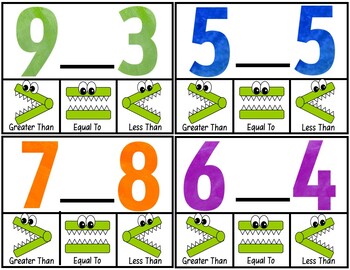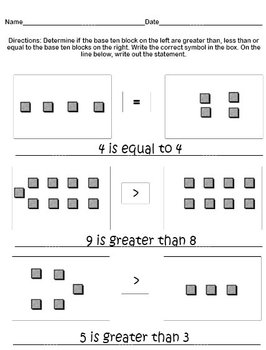

(More/Less: Greater Than/Less Than/Equal)ġ. Let’s see how we can use them with different Excel functions to find out if an outlet is gaining profit or incurring a loss, count and sum up all the sales amount above 1000. The main use of comparison operators is in different Excel functions like IF, SUMIF, COUNTIF, Etc. Given a set of objects, STUDENT will “take away”, or subtract the subtrahend (pre-determined or student’s choice), in order to solve and write the difference, with 80% accuracy, in 4 out of 5 opportunities, by MONTH, YEAR. Greater Than and Less Than Excel Comparison Operators in Arguments of Excel Functions. Given three sets of objects to count, STUDENT will write “how many” for each addend to determine the sum of three numbers, with 80% accuracy, in 4 out of 5 opportunities, by MONTH, YEAR.ġ. Step 2: Next, record a 1 in the place of the greatest power less than your number (i.e., the biggest box you can use), and subtract that base ten value from. Given two sets of objects to count with a sum up to _(10/15/20), STUDENT will count each set and write the number for each addend and add to determine “how many” (sum), with 80% accuracy, in 4 out of 5 opportunities, by MONTH, YEAR.Ģ. Given numbers from 0-30 to trace, STUDENT will trace each single and double-digit number by tracing along the given dashed numbers, with 80% accuracy, in 4 out of 5 opportunities, by MONTH, YEAR.ġ. Given a visual number chart or number cards and a teacher request to (touch the number/say the number/indicate on voice output device), STUDENT will comply with the request, with 80% accuracy, in 4 out of 5 opportunities, by MONTH, YEAR.ģ. Given a number from _(0-3, 4-7, 8-10, etc.), STUDENT will say the number name and write the number with correct formation, with 80% accuracy, in 4 out of 5 opportunities, by MONTH, YEAR.Ģ. Given a written number, STUDENT will count out the same number of objects, with 80% accuracy, in 4 out of 5 opportunities, by MONTH, YEAR.ġ. Given objects to count up to _(10/12/15/20), STUDENT will demonstrate one-to-one correspondence by independently counting the correct number of objects, with 80% accuracy, in 4 out of 5 opportunities, by MONTH, YEAR.Ģ. in base-10, while the same value is simply represented as 0.1 in base-7.IEP Goals: (Counting to demonstrate one-to-one correspondence)ġ. Meaning that if you have 421.35 in base-7 you get to its base-10 equivalent by doing After the comma you keep on decrementing the exponent, If you want to convert 421 from base-7 to base-10, you do 4*7 2 Following this example, the binary number 10 is 2 in our (base-10) system.ĭoes it make sense that a finite fraction ("decimal") is infinite in another base? In base-2 (binary), we only have 2 characters, i.e. The base we usually use is base-10, because we have 10 (when including 0) digits until we start

Therefore, 3 in base-3 is 10: because that Practice comparing numbers greater than, equal, and less than. Your elementary grade students will love this Comparison (greater than, equal, less than Math. Numbers are represented with digits which are This Comparison (greater than, equal, less than Math is perfect to practice comparing numbers skills.


If we talk aboutĬharacters (including 0) available to display a number. For instance, my first name in base-38 returns EPKCO in base-42.Ī base is the system with which numbers are displayed. Uses of high mathematical bases (apart from base64-encoding), please let me know.įun game: Enter your name and supply base-36 (or higher) as the starting base and see what number If you know of any standard for displaying numbers higher than base-36 or you know of some interesting You can convert the result back to the starting base to get an idea of the precision. The last few decimal places might not be correct Tip: add ending 0's to numbers with decimals for better precision, such asĠ.5000 instead of simply 0.5. Implementation as PHP only goes up to base-36 natively and lacks support for "A" stands for 10, "Z" for 35, "a" (lower-case)įor 36 and "z" (lower-case) for 61. The base ten blocks provide students visual cues to use the greater than less than and equal to symbols to compare 2 digit and 3 digit numbers correctly.


 0 kommentar(er)
0 kommentar(er)
